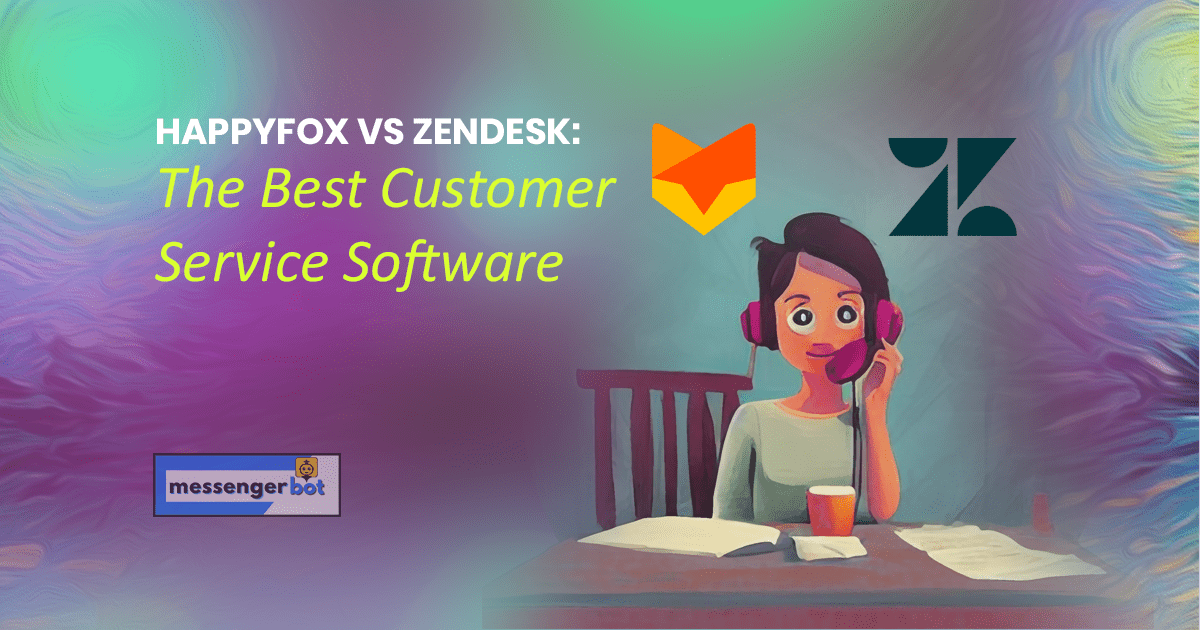Customer service software is a hot industry right now. There are tons of options out there, and it can be hard to figure out which one will work best for you.
If you are looking for the best customer service software, then it is important that you do your research. Happyfox and Zendesk are two of the most popular customer service software providers on the market today. Which one should you choose? We have done all of the hard work for you! In this article, we will compare both companies so that you can decide which one is right for your business needs.
What is Happyfox?

Happyfox is a cloud-based customer service platform that allows businesses to streamline communication with customers, track user feedback and automate responses.
Happyfox provides multiple services to help support customer service needs, including an email ticketing system, FAQs section for self-help, and access to a library of knowledge base articles.
Happyfox also offers social media integration so users can reply directly on Facebook or Twitter while they are logged into the HappyFox platform.
Businesses that use this software will have their customer service issues handled in an organized, efficient manner.
Happyfox is compatible with several email providers including Gmail and Yahoo! Mail.
What is Zendesk?
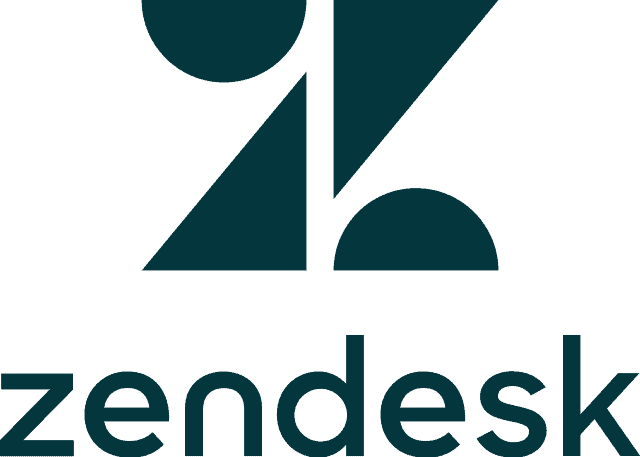
Zendesk is a customer service software that helps you to build, support and scale your business. It provides complete control over the entire customer experience as well as all of its related processes such as sales, marketing, and operations with just one platform.
Zendesk has an easy-to-use interface that also offers you a highly customizable platform.
It enables businesses of all sizes to provide the best customer experience as well as maximize productivity with its powerful features such as ticket management, knowledge base, reporting tools, etc.
Pros of Happyfox
Happyfox’s pros are its pricing structure, features, available integrations.
In terms of pricing, Happyfox is priced at $15 per agent, with no limit on the number of agents. Zendesk is more expensive for smaller companies because it starts out at around $19 per user and jumps up once you get past 50 users—which isn’t great if your company is still growing.
For features, Happyfox has a lot to offer in its basic plan. You can create multiple forms, categories, and email templates to help you service your customers more efficiently. It also has a feature called “ticket tagging” which allows agents to tag tickets in different ways—i.e., tagging the same ticket with the terms “praise,” “trouble,” etc.—to quickly see all related tickets and address customer concerns in a timely manner.
In terms of integrations, Happyfox is the winner because your team will have access to many different apps and tools to help service your customers better.
Pros of Zendesk
Zendesk’s pros are that it has a really great interface. Zendesk is also easy to designate certain agents, and the user experience makes the tool very accessible for both customers and support reps. The software offers live chat features as well as detailed reports that are easily shared with coworkers or clients.
Zendesk offers a number of integrations with other tools including Slack, Salesforce, and Github. Zendesk is known for its customer service software! It’s easy to set up, fast to work with and the user interface design is very intuitive. The tool also has great reporting features that make it easy to share information across your company.
Compare Happyfox vs Zendesk Features
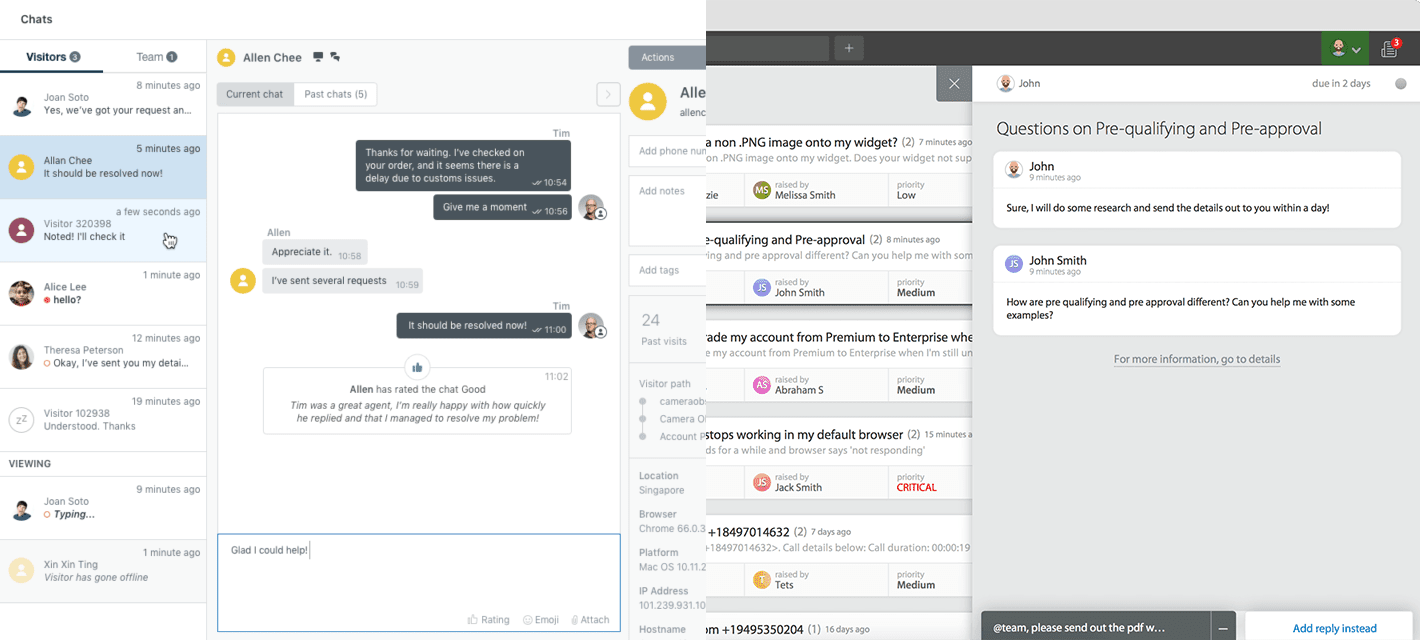
Happyfox and Zendesk both offer a large number of features that will benefit any company looking to improve its customer service. Whether you’re trying to better organize your support team, streamline the ticket management process, or monitor social media for potential issues – there is likely a solution out there for you. Let’s take a look at some of the most common features provided by both Happyfox and Zendesk.
Ease of Use

Ease of use is important to marketing because it increases the likelihood that a customer will be satisfied with their purchase and therefore more likely to recommend your product. If using easy-to-use software makes customers happy, they’re going to continue using it and recommending it making them even happier in turn.
This also reduces support costs by reducing the amount of time that customer support representatives spend on each request.
Happyfox’s ease of use is enhanced by its intuitive dashboard and simple navigation. The use of keywords in the search bar is a great way to look for customer service requests quickly and easily.
Zendesk’s user interface has been described as “cluttered” which could make it difficult for new users to find the information they need without additional guidance or training from support representatives.
Happyfox has a much brighter outlook than Zendesk as it is less expensive, easier to use, and offers more benefits like unlimited customer service requests and live chat support which can boost sales conversions by providing customers with immediate answers for their questions or concerns. With the ability to respond quickly and efficiently, the customer service department will have more time for important matters that can help boost revenue.
Happyfox is a cloud-based support ticketing system with an easy-to-use interface which makes it great for small businesses or teams who handle their own customer service.
Zendesk’s ease of use is enhanced by its intuitive dashboard and simple navigation. The use of keywords in the search bar is a great way to look for customer service requests quickly and easily.
Zendesk has been described as “cluttered” which could make it difficult for new users to find the information they need without additional guidance or training from support representatives.
In terms of ease of use, Happyfox comes out ahead with its user-friendly dashboard and simple navigation. Happyfox is also better for small businesses or teams that handle their own customer service requests.
Zendesk’s ease of use could be improved by removing unnecessary elements in the interface which are not well hidden to new users, making it less intuitive for them to find the information they need.
Ticketing System

A ticketing system is the most efficient way of managing customer complaints, support tickets, and other issues. It is also an integral part of CRM software which allows you to keep track of each communication with your clients in one place.
A ticketing system is extremely important for customer service because it is the only way you can track and store all your communications.
A must-have feature of any business ticketing software is an option to attach files or images. Also, most systems offer integration with existing CRM platforms. The best customer service software should have a powerful search function and it’s easy to use.
Happyfox’s ticketing system is very easy to use. The software is simple, straightforward, and offers a high level of control over your interactions with customers. You can easily set up ticket priority levels or create custom queues for different types of tickets.
Happyfox’s ticketing system also works on smartphones and tablets. You can check incoming messages while you are away from your computer, so it is more convenient than any other software we have reviewed in our comparison of Happyfox vs Zendesk.
Zendesk is more complex and has a steeper learning curve. It also offers superior reporting features which are very helpful for monitoring the health of your customer service operation. Zendesk’s basic plan starts at $20/user/month, but if you have a large team or need advanced support it would be better to go for a more expensive plan.
Zendesk’s ticketing system provides you with good service management functionalities but it isn’t the most intuitive system on the market.
In terms of a ticketing system, Happyfox is a more affordable solution that doesn’t sacrifice ease of use or feature set. Zendesk, on the other hand, offers great reporting tools and superior customer service management features but it has a steeper learning curve.
Help Desk

A help desk is a customer service software that allows any business to better handle communication with their customers.
The help desk works by allowing businesses to answer questions from their customers in real time, via live chat or email support. In addition, they also allow for knowledge base articles and self-help guides. This way both the customer and the business can find answers easily.
Help desk is very beneficial for businesses because it allows them to be accessible at all times, even 24/hrs; this way they don’t miss out on any potential business opportunities. It also reduces costs by allowing them not to hire more employees or customer service reps.
Happyfox’s help desk is free for the first 1000 tickets each month.
Happyfox’s help desk can have up to five agents.
Happyfox’s help desk allows for text chat, video chat, and screen sharing.
Happyfox’s help desk can be accessed via live chat, email, or phone at their standard rates.
Zendesk offers live chat support as well as email service and a shared knowledge base.
Zendesk is 100% customizable and can be configured to your needs, feature-rich with unlimited agents across all locations. It also has an integrated help desk app that allows you to manage customer requests directly from your email inbox or website/webforms; it’s fully automated with intelligent routing, escalation, and notifications.
In terms of the help desk, both Happyfox and Zendesk are great options. Both provide very similar services, with a few minor differences. However, the one major difference is that the help desk of Happyfox is free for the first 1000 tickets each month while Zendesk charges depending on how many agents need to be hired which can range from $199/mo-$399/mo.
Live Chat Option
The live chat option is a way of communication between customers and the support team. It is a quick and convenient way of solving the problems customers have. The live chat option is important in marketing because it increases sales, improves customer service, and creates loyalty with customers.
The LIve chat option of Happyfox and Zendesk is very similar. They both offer 24/h chat support and provide an easy way for customers to reach out to the company’s customer service department.
The main advantage of using the live chat option with HappyFox is that it offers you complete control over your chats. You can choose how you want to interact with your customers and what type of information is conveyed.
The main advantage of using the live chat option with Zendesk is that it has a higher customer satisfaction rate than other means of communication because consumers have an opportunity to express their thoughts without any fear of being judged.
The main disadvantage is that they have a limited number of languages available for live chat support. Also, Zendesk uses artificial intelligence to provide instant replies so you might not get all information needed if it can’t fully comprehend the question.
The main disadvantage is that you will have to pay more for live chat support in comparison to HappyFox. Also, they don’t provide complete control over chats and require the customer service representative to follow specific guidelines set by the Zendesk team when responding to questions.
In terms of the live chat option, Happyfox and Zendesk are both great choices for businesses. However, Happyfox offers complete control over chats which is important if you want to build a strong relationship with your customers.
Omnichannel Communication Support
Omnichannel is a buzzword in the marketing and customer support industry. People often confuse it with multi-channel support, but they are not the same thing.
Multi-channel support simply means that your customers can reach you on multiple channels like phone, e-mail, or chat at once whereas omnichannel communication defines how all these channels are integrated to give the customer a seamless experience.
Omnichannel means that all your support platforms (like live chat, e-mail, or social media) work together in tandem with one another. The aim of this strategy is to ensure that customer queries are answered as quickly and easily as possible so that they can use the channels which work best for them to seek help.
Omnichannel communication support is important for marketing because nowadays, customers tend to take their time before making a purchase decision. It takes an average of six hours from the first contact with a brand to the moment when a customer makes up his mind.
The omnichannel communication support of Happyfox has a live chat, phone support, and e-mail ticketing system integrated into its platform which means that your customers can reach you on multiple channels at once. The customer service agents have access to all the data through one single dashboard so they are always up-to-date.
On the other hand, Zendesk has a chat module similar to Happyfox but you have to subscribe to their e-mail ticketing system separately if you want it. This means that all your customer queries are not integrated into one single dashboard and leads to disjointed communication which can be confusing for the customers.
The live chat module of both platforms works similarly. The chat window appears on your website, giving you a chance to engage with each customer as they visit it. In case there is some problem or confusion which cannot be resolved through text-based communication, you can simply escalate it to a phone call or e-mail.
In terms of omnichannel communication support, there is no significant difference between the two platforms. Happyfox doesn’t have a separate e-mail ticketing system but it has an integrated live chat and phone support service which makes up for it.
Self-service Portal
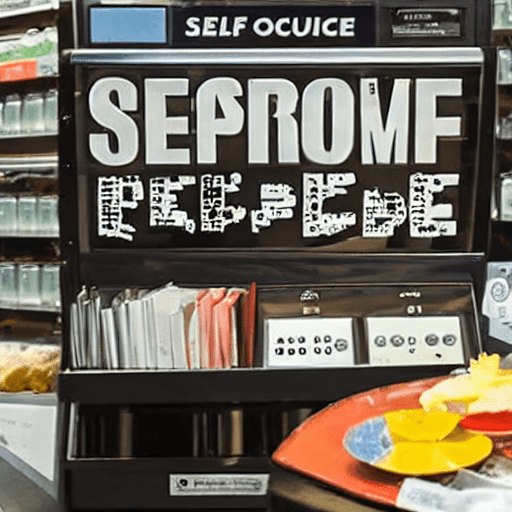
Self-service portals are useful for marketing because they allow customers to solve their problems, ask questions, and deal with issues without having to contact customer service. This means that companies can save time and money by not answering as many phone calls or emails from customers who have already found the answer themselves.
Self-service portals are also important because they are usually cheaper than hiring an actual customer service representative. This means that businesses can save money by not having to pay the salary of a worker dedicated solely to responding to customers.
A self-service portal also allows businesses to save money by not having to pay for as many customer service requests and phone calls. This is because customers now have the ability to solve their own problems without requiring a representative on the other end of an email or telephone call. Businesses can therefore spend less time, effort, and money dealing with issues that customers can now solve themselves.
A self-service portal is beneficial for marketing. Marketing firms should consider using these features when planning their companies’ websites, as it will allow them to save time, money, and effort.
Happyfox’s self-service portal has a contact form to communicate with agents. It also has an FAQ section and knowledge base where users can find answers without having to interact with live chat or email representatives.
Zendesk’s self-service portal allows users to submit tickets when they need help and track the status of their request until it is resolved. This tool includes details like the agent who is assigned to the ticket, as well as updates on when it was opened and closed.
Both Zendesk’s and Happyfox’s self-service portal allow users to access information without having to contact customer service agents. However, only Happyfox allows customers to submit a support request via email or telephone if they do not find what they need.
Happyfox’s Self-service portal allows customers to communicate with a representative via telephone, email, or contact form if they do not find what they are looking for in their FAQ section and knowledge base. Zendesk only offers users the option of sending an email when asking questions that are not covered by the knowledge base.
In terms of the self-service portal, Happyfox and Zendesk are both great options. However, Happyfox allows customers to communicate with a representative via telephone or email if they cannot find an answer in their knowledge base and FAQ section, while Zendesk only offers users the option of sending an email when asking questions that aren’t covered by its knowledge base.
Customer Sentiment Analytics
Customer sentiment analytics is the process of gathering insights from customer feelings, attitudes, and perceptions. These can be gathered through social media monitoring tools which gather data on sentiment based on words within the text. This is important for marketing because it provides reputation insights that are not possible with traditional web analytics metrics such as page views or bounce rates.
The customer sentiment analytics of Happyfox and Zendesk are very similar. Both tools help marketers monitor customer sentiment through social media channels, blogs, and forums. The main difference is that Happyfox has more integrations than Zendesk which allows you to receive alerts on your other apps like Salesforce CRM or Gmail when negative reviews pop up so you can quickly respond.
Happyfox’s customer sentiment analytics tool is best for small businesses looking to monitor their reputation online.
Zendesk’s customer sentiment analytics tool provides basic information that allows you to monitor your brand on social media channels, blogs, and forums. However, it doesn’t have integrations with other apps so it’s not as good for responding to reviews quickly.
Happyfox is best for small businesses looking to monitor their reputation online with advanced integrations that allow you to respond quickly. This makes Happyfox the better choice over Zendesk when it comes down to customer sentiment analytics tools.
In terms of customer sentiment analytics, Happyfox has the upper hand over Zendesk. Happyfox’s integrations allow you to respond quickly whereas Zendesk doesn’t have any integration options so it can be harder for small businesses to stay on top of their reputation online.
Knowledge Base
A knowledge base is an organized collection of information that helps provide a solution to your customers. It provides the answer to frequently asked questions and any other relevant material about your business or products/services. A knowledge base allows you to share useful information with anyone who might be looking for it, even if they’re not currently a customer.
In today’s competitive market, it is important that businesses have a way to answer customer questions quickly and efficiently.
The most common solution for this problem out there today is knowledge bases or FAQ pages, but these can often be ineffective because they don’t give your customers the information they need in time before making their decision to buy from you or someone else.
Happyfox’s knowledge base provides your customers with the information they need at their fingertips in one place. With Happyfox, you can create a knowledge base that is informative and easy to navigate for your users so they can find what they are looking for quickly.
Zendesk’s knowledge base has great potential but sacrifices form over function when it comes down to design. Zendesk’s knowledge base is not very engaging and does not provide customers with an experience that makes them want to come back.
Happyfox wins when it comes down to the knowledge base because of its ability to offer your customers the information they need quickly, which results in fewer support issues for you.
Happyfox offers an impressive range of features to ensure your knowledge base is set up for success. First, they have the ability to edit the design, structure, and content of your knowledge base pages in real-time without any development resources required. Second, they customize all aspects of your KB page such as fonts, colors, images, and more using a simple user interface and drag and drop editor. Last but not least, they automatically generate a sitemap for your knowledge base which means that search engines can easily find all of the pages you create – resulting in more organic traffic to your KB page.
In terms of knowledge base, Happyfox is the clear winner. Not only does it provide your customers with a more efficient experience, but they also offer some great features that Zendesk simply doesn’t have.
Zendesk’s knowledge base has the potential to be really good for businesses using their product, but until its design and functionality improves then Happyfox will remain on top.
Mobile App
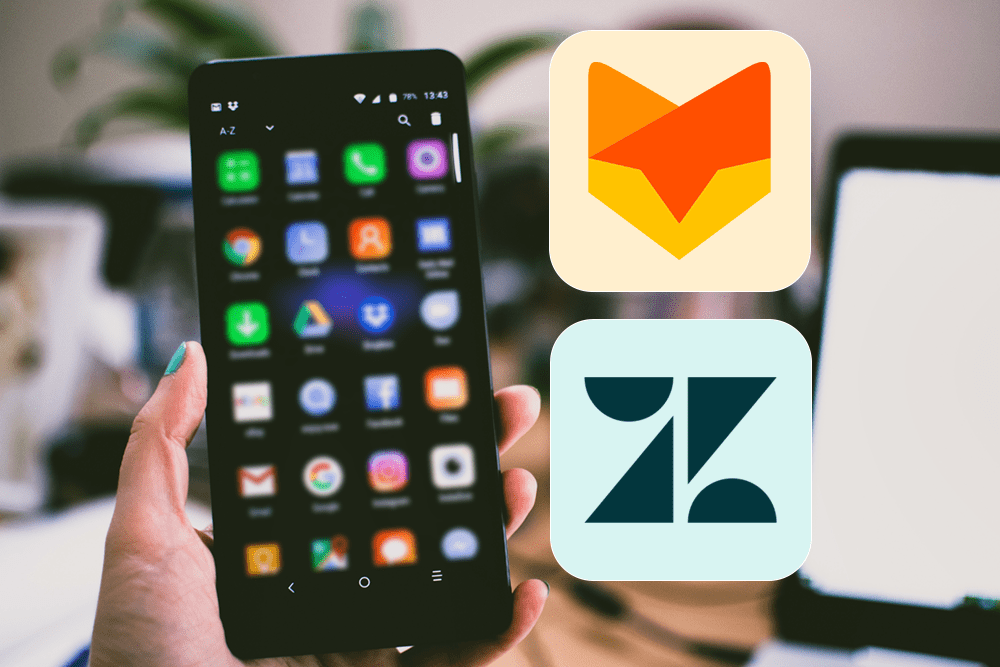
A knowledge base is an organized collection of information that helps provide a solution to your customers. It provides the answer to frequently asked questions and any other relevant material about your business or products/services. A knowledge base allows you to share useful information with anyone who might be looking for it, even if they’re not currently a customer.
In today’s competitive market, it is important that businesses have a way to answer customer questions quickly and efficiently.
The most common solution for this problem out there today is knowledge bases or FAQ pages, but these can often be ineffective because they don’t give your customers the information they need in time before making their decision to buy from you or someone else.
Happyfox’s knowledge base provides your customers with the information they need at their fingertips in one place. With Happyfox, you can create a knowledge base that is informative and easy to navigate for your users so they can find what they are looking for quickly.
Zendesk’s knowledge base has great potential but sacrifices form over function when it comes down to design. Zendesk’s knowledge base is not very engaging and does not provide customers with an experience that makes them want to come back.
Happyfox wins when it comes down to the knowledge base because of its ability to offer your customers the information they need quickly, which results in fewer support issues for you.
Happyfox offers an impressive range of features to ensure your knowledge base is set up for success. First, they have the ability to edit the design, structure, and content of your knowledge base pages in real-time without any development resources required. Second, they customize all aspects of your KB page such as fonts, colors, images, and more using a simple user interface and drag and drop editor. Last but not least, they automatically generate a sitemap for your knowledge base which means that search engines can easily find all of the pages you create – resulting in more organic traffic to your KB page.
In terms of knowledge base, Happyfox is the clear winner. Not only does it provide your customers with a more efficient experience, but they also offer some great features that Zendesk simply doesn’t have.
Zendesk’s knowledge base has the potential to be really good for businesses using their product, but until its design and functionality improves then Happyfox will remain on top.
Internal Chat Option
An internal chat option is a chat tool that helps you and your team members to communicate with each other privately. The internal chat feature of Zendesk is used by organizations for various purposes such as providing quick resolution feedback, solving problems, sharing information and gathering updates from teams in real-time.
Internal chats are a great way to get a hold of your team members and create a virtual communication platform. With the help of this feature, you can keep track of all conversations that have been going on among different departments or teams in an organization. This tool also allows businesses to work like they would do face-to-face which is not possible with email chats.
Happyfox’s internal chat option is not as rich and feature-packed as Zendesk’s internal chat option. The Happyfox chat platform only allows the users to talk with each other privately and share files/documents but they cannot view previous chats. As for Zendesk, it provides you with a complete suite of all types of tools that are required to create a strong communication platform within an organization.
Zendesk allows you to have unlimited chats, integration with almost all apps and services, chat history which can be accessed anytime, etc. Another great feature about the Happyfox chat option is that it does not require any installation or setup. All you have to do is just create a chat room and start having conversations with your team members.
Zendesk offers lots of features in its internal chats such as easy sharing, real-time updates, etc., however, it requires users to install the Zendesk app on their devices. It also provides you with a complete chat history that can be accessed anytime and does not require any extra fees for the same.
In terms of internal chat option, Zendesk is the clear winner. It offers rich features of real-time chats and private conversations which are not available in Happyfox’s chat platform. However, if you want to create a virtual communication platform without installing any app then Zendesk might be expensive for your business whereas Happyfox provides you with this feature at an affordable price.
Unified Agent Desktop
Unified agent desktop is a live chat software that enables agents to immediately engage in conversation with customers on their websites. This helps increase conversion rate and sales by providing better customer service, which makes for increased revenue.
Unified agent desktop also has an integrated knowledge base system so the agents are able to handle simple questions with ease.
The best part about this system is that everything is in one place, there’s no need for switching between different software tools which make agents work easier and more efficiently resulting in better sales conversions.
The unified agent desktop of Happyfox works on all browsers, while the Zendesk one is limited to Chrome.
The only drawback of this software is that it lacks a built-in knowledge base system which can make support more time-consuming for agents even with the help of a unified agent desktop.
Still, many users find this software to be quite useful with its features that allow for better sales conversions.
Happyfox’s unified agent desktop is available on a 30-day trial.
Zendesk also has a similar 28-day free trial but it does not include a live chat feature, which makes it less effective for marketing purposes compared to HappyFox with its unified agent desktop that allows you to get in touch with your customers immediately.
The best part about this software is that it works with all browsers and has an easy-to-use interface making life for agents easier and more efficient resulting in increased sales conversions, which ultimately results in higher revenue.
Zendesk offers 24/7 support while HappyFox only offers support during business hours.
In terms of unified agent desktop, Happyfox is the clear winner with its all-inclusive features that allow for increased sales conversions and revenue.
Frequently Asked Questions
What are some alternatives to Happyfox and Zendesk?
Some alternatives to Happyfox and Zendesk are Desk.com, Assistly, and GrooveHQ
Desk.com is a complete front- and back-office solution that provides robust customer service features such as automated replies, knowledge base, powerful reporting tools, and more.
Assistly is an integrated support desk that allows you to streamline communication with your customers making them happier than ever before. It offers options for email ticketing systems, live chat, or click-to-call.
GrooveHQ is a complete customer service solution that includes communication tools, help desk ticketing systems, and support forums which make it efficient for both businesses and their customers to communicate with each other.
Which is better, Helpscout vs Zendesk?
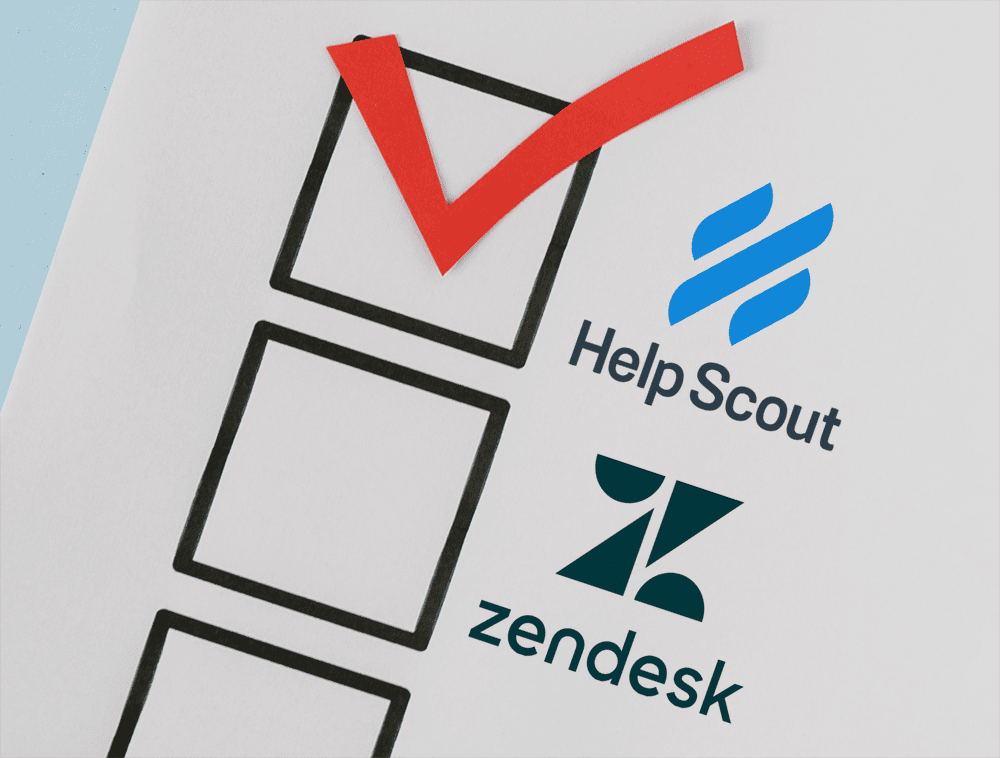
Between Helpscout and Zendesk the better platform is Zendesk.
Zendesk is the preferred platform for many businesses because of its user-friendly interface and affordable pricing. It also offers excellent customer service software features such as a ticketing system, knowledge base, and more. Although Zendesk does not offer an integration with social media, it is a great customer service software for businesses of all sizes.
Zendesk offers three plans: Basic ($20/agent), Plus($50/agent) and Enterprise($150). However, one must consider the benefits that come with each plan before choosing an option. For example, the Basic plan only allows for one agent and does not offer a knowledge base. On the other hand, Zendesk’s Plus plan is perfect for most small businesses because it offers unlimited agents along with knowledge base integration.
Helpscout, on the other hand, offers a free plan that is perfect for small businesses. It does not have as many features as Zendesk but its user-friendly interface makes up for this shortcoming.
In conclusion, between Helpscout and Zendesk the better platform is Zendesk. Zendesk offers a better customer service software experience, excellent features and is completely customizable to meet your business needs.
Which is better, Samanage vs Zendesk?

Between Samanage and Zendesk the better platform is Zendesk. Zendesk is a great customer service platform that has been around for some time and can prove its worth with its track record of happy customers. Even though Samanage is new, they have made quite the splash in their first year on the market and are growing at an exponential rate! They claim to be “Webhelp for SMB.” This is a bold statement, but if they can deliver on it then Zendesk better watches out.
Which is better, GrooveHQ vs Zendesk?

Between GrooveHQ and Zendesk the better platform is GrooveHQ. GrooveHQ provides a better interface with easier access to reports and ticket search-ability.
While both have mobile app availability, Zendesk does not handle push notifications as well as GrooveHQ which is very important for businesses that rely on customer service during off-hours or for a business that needs to appear active even when they are not.
In the end, GrooveHQ is better for businesses that need more modern features and additional access points as well as those who want easier ticket searching capabilities. In contrast, Zendesk offers better email integration but does not offer push notifications which are increasingly becoming an important part of customer service.
How can your business benefit from help desk software?
The best thing about help desk software is that it’s easy for everyone to use. It can be accessed from anywhere in real-time, meaning you won’t have any downtime when trying to resolve an issue. Furthermore, it’s very user-friendly.
Help desk software is also very organized. You can use the software to create categories and subcategories for easy reference, which is great if you have a large support team that needs to be on top of things at all times.
One last point, help desk software works well with other types of technology like mobile devices and social media outlets. This means you can use a customer service platform for all of your needs.
What are some of the most popular apps that work alongside help desk software?
The apps that work alongside help desk software are typically related to customer service. Some popular apps include Social media management tools, Customer relationship management (CRM) software, and Email marketing platforms.
Apps such as Twitter and Facebook help support customer service by providing access to a company’s social media accounts.
CRM software is popular because it allows companies to record the history of each interaction with customers, which can be incredibly helpful for future reference when communicating with them again about an order or product.
Email marketing platforms are often used in conjunction with help desk software because they allow companies to send targeted emails based on each customer’s needs.
What are the benefits of a Happyfox ticketing system?
The benefits of using Happyfox’s ticketing system, First, Support agents can get a clear picture of the history and status of customer service requests. This ensures that customers get consistent, quality support across all channels. Second, Users have quick access to important information on their tickets such as priority level, who is working on it, past responses from other users, etc. Third, Agents can easily escalate tickets if the customer escalates it themselves. This ensures that their concerns are taken care of in a timely manner. Fourth, Support agents have quick access to all the customer details they need through their ticketing system. This ensures that there is no unnecessary wait time for customers or support team members prior to resolving an issue. Fifth, Happyfox’s automated notifications let you know when a new inquiry has been created so your business can respond fast and keep customers happy!
Which support tool is for you?
The best support tool for you will depend on your company size, your goals, and the features that you need to have.
Happyfox and Zendesk both offer free plans.
So, you can try them out and see which one works best for your company.
We hope that we were able to help you know what are some of the main differences between these two tools so it will be easier for you to choose the best one for your company.

